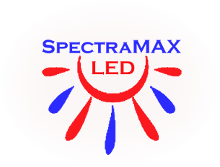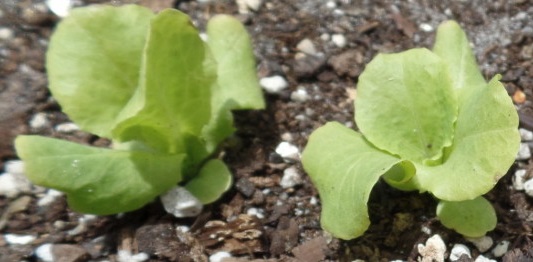Do LED grow lights work? The short answer is YES!
Lower power consumption:
- Led grow lights use 20-50% of the power used by the best known HID (high intensity discharge) lights, HPS (high pressure sodium) and MH (metal halide).
- LED grow lights produce similar plant production results as the HPS and MH lights at this lower power requirement.
Less heat:
- Led grow light fixtures run at 90-110 degrees Fahrenheit, or 32-43 Celsius which eliminates the need for high power fans and cooling.
- HID bulbs and ballasts run much higher temperatures and usually result in increasing room temperatures about 20 degrees Fahrenheit (7 degrees Celsius). Cooling is usually required.
Produce more useful light:
- LED grow lights can be made to produce only the light useful for photosynthesis.
- HPS and MH lamps produce a good amount of light available to plants, but they also produce a large amount of wasted light energy not useful for plants.
- LED grow lights may be focused by a 90 degree lens to focus the light directly into the grow area. Yes, there is a relatively small percentage of light energy lost through the lens, but the even, focused, dispersal of light provided by the lens allows the light to concentrate in the square footage of grow area where it is needed and used the most by your plants.
PAR (photosynthetic active radiation):
- The visible light that humans see is described as lumens, but the light which plants use is called PAR: photosynthetic active radiation.
- PAR emitted from LED fixtures can be measured to prove the amount of light energy available to plants produced in that fixture.
- Beware of companies not listing PAR output and distribution within the grow area for their lights.
Variable and designable spectrum:
- Led grow lights may be designed to provide a vegetative spectrum and a blooming spectrum in the same fixture or may be obtained in separate fixtures.
- A fixture with both veg and bloom needs to be nearly twice as large to contain the same PAR as a fixture containing just veg or bloom only.
- A fixture which can be changed from a veg spectrum to a bloom spectrum provides nearly twice the available PAR for each cycle because light energy is maximized for each cycle.
Longevity:
- HID grow light bulbs last 7000-20,000 hours but typically need to be replaced every 9-12 months due to loss in light output by about 20% within that time. HID ballasts may last over 20 years if they are care for properly.
- LED lights last about 50,000 hours or about 10 years if run for 14 hours per day during that time. To maintain longevity, they should not be run 24 hours per day because lifespan is enhanced by a cooling cycle. Therefore most growers run LED fixtures 16 hours for the veg cycle and for 12 hours with the bloom cycle.
Product Photos and Highlights…









